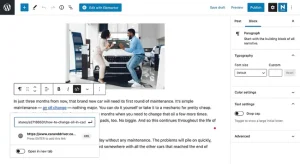Small and Medium-sized Enterprises (SMEs) play a vital role in the global economy, yet they are often prime targets for cyber attacks due to limited resources and cybersecurity expertise. As cyber threats continue to evolve in sophistication and frequency, it’s imperative for SMEs to prioritize cybersecurity measures to protect their sensitive data, customer trust, and business continuity. This comprehensive guide outlines essential cybersecurity best practices tailored to the unique needs and constraints of SMEs, empowering them to strengthen their security posture and defend against cyber threats effectively.
- Conduct a Cybersecurity Risk Assessment:
- Start by conducting a comprehensive cybersecurity risk assessment to identify potential threats, vulnerabilities, and risks to your organization’s systems, data, and operations. Assess the likelihood and impact of various cyber threats, including malware infections, phishing attacks, data breaches, and insider threats, to prioritize mitigation efforts effectively.
- Develop a Cybersecurity Policy and Plan:
- Develop a formal cybersecurity policy and plan that outlines your organization’s security objectives, roles and responsibilities, acceptable use policies, and incident response procedures. Clearly communicate security expectations to employees and establish guidelines for handling sensitive information, accessing company networks and devices, and reporting security incidents promptly.
- Educate and Train Employees:
- Invest in cybersecurity awareness training for all employees to educate them about common cyber threats, phishing scams, and best practices for maintaining strong security hygiene. Provide regular training sessions, online courses, and resources to help employees recognize and respond to suspicious emails, avoid clicking on malicious links, and protect sensitive data.
- Implement Strong Access Controls:
- Implement strong access controls to limit access to sensitive data and systems based on the principle of least privilege. Regularly review user access permissions, enforce strong password policies, and implement multi-factor authentication (MFA) to add an extra layer of security to user accounts and prevent unauthorized access.
- Keep Software and Systems Updated:
- Regularly update and patch all software, operating systems, and firmware to address known vulnerabilities and protect against exploitation by cybercriminals. Enable automatic updates wherever possible and establish procedures for testing and deploying patches promptly to minimize the risk of security breaches.
- Secure Your Network:
- Secure your network infrastructure with firewalls, intrusion detection and prevention systems (IDPS), and virtual private networks (VPNs) to protect against unauthorized access and network-based attacks. Segment your network to isolate critical systems and sensitive data from potential threats, and implement network monitoring tools to detect and respond to suspicious activities.
- Backup and Disaster Recovery:
- Implement regular data backups and disaster recovery plans to ensure that critical business data can be restored in the event of a cyber attack, data breach, or natural disaster. Store backups securely offsite or in the cloud, and test your backup and recovery processes regularly to verify their effectiveness and reliability.
- Establish Vendor Security Policies:
- Evaluate the cybersecurity posture of third-party vendors, suppliers, and service providers that have access to your sensitive data or systems. Establish vendor security policies and agreements that require vendors to adhere to strict security standards, conduct regular security assessments, and notify you of any security incidents or breaches promptly.
- Monitor and Respond to Security Incidents:
- Implement continuous monitoring tools and security incident detection mechanisms to identify and respond to security incidents in real-time. Develop an incident response plan that outlines procedures for containing, investigating, and mitigating security breaches, and establish communication channels for reporting incidents to relevant stakeholders and authorities.
- Stay Informed and Engage with Cybersecurity Communities:
- Stay informed about the latest cybersecurity threats, trends, and best practices by engaging with cybersecurity communities, attending industry events, and participating in information sharing and threat intelligence initiatives. Collaborate with other SMEs, industry partners, and cybersecurity experts to exchange knowledge, share insights, and enhance your organization’s cybersecurity defenses.
Conclusion: By implementing these cybersecurity best practices, small and medium-sized enterprises (SMEs) can strengthen their security posture, protect their sensitive information, and mitigate the risk of cyber attacks. By prioritizing cybersecurity and investing in robust security measures, SMEs can defend against evolving cyber threats, maintain customer trust, and safeguard their business operations and reputation in today’s digital landscape.













